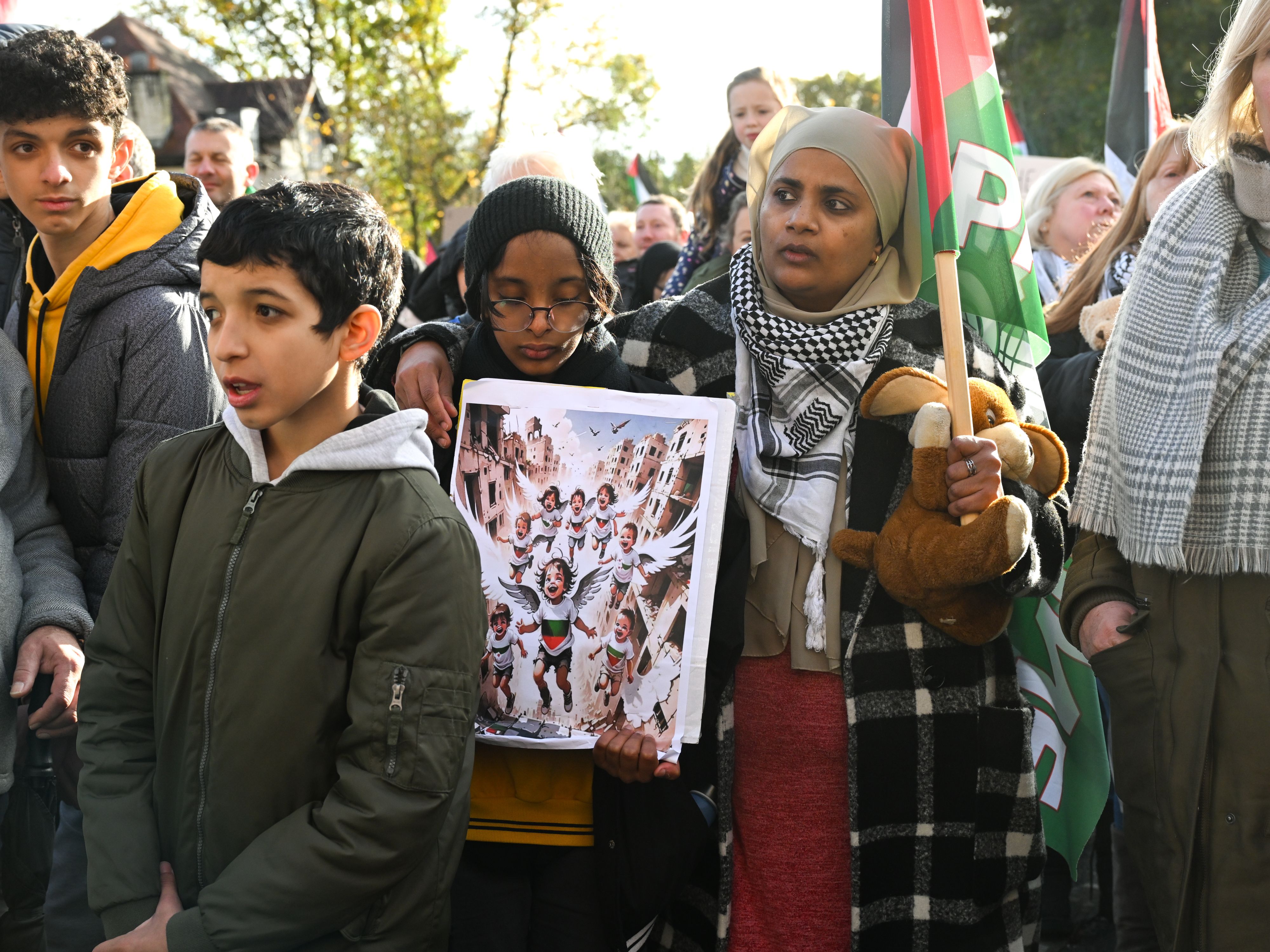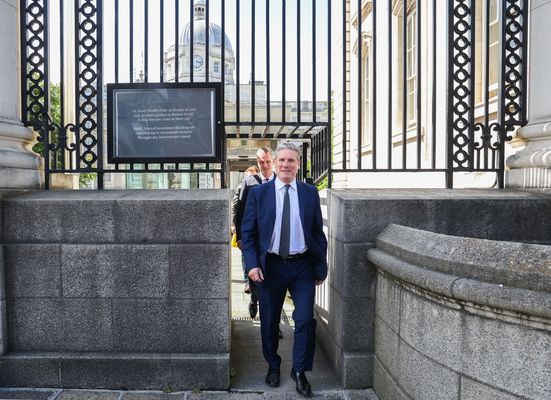SINCE the launch of Hamas’ Operation Al-Aqsa Flood on 7 October, the IDF (Israel Defence Forces) has named 317 of its soldiers killed during the initial fighting and a further 28 lost in Gaza itself. Israel Police named 58 dead officers. Hamas also killed a thousand civilians in a blatant breach of international humanitarian law which requires warring parties to observe the “principle of distinction” – between combatants and civilians.
Up to 240 hostages, including some soldiers, were taken to the Gaza Strip and are being held either by Hamas or by others. The hostages include 23 Thai nationals, eight Germans and citizens from a range of other countries – Argentina, France, Italy, the Netherlands, Russia, Spain and the United States. Among the hostages are 30 children (under 18-year-olds), one of whom was released along with her mother, both US nationals, after negotiations between Hamas and the Israeli government brokered by Qatar and Egypt. Two other women hostages, both Israelis, were released on 23 October.
🚨 Emily Hand, the 8-year-old Irish-Israeli girl thought to have been killed when Hamas stormed her kibbutz, is now believed alive and hostage in Gaza
— Gavan Reilly (@gavreilly) November 5, 2023
Emily’s father gave a memorable CNN interview, showing relief at her seeming death rather than capture. https://t.co/mUVmM3g6gJ
According to Hamas, 60 hostages have been killed in Israeli bombing raids that started four hours after the first of the Hamas rockets were fired and have continued relentlessly ever since. This has angered the Hostages and Missing Families Forum which has told prime minister Netanyahu that families support an “all for all” prisoner swap for which they believe there is broad support, as shown in public demonstrations.
The hostages are central to the Hamas objective of the release of all Palestinian prisoners held by Israel. The number of prisoners has doubled since the outbreak of the latest hostilities because the Israelis have imprisoned at least 4,000 workers from Gaza who had permits to work outside the Strip either in Israel or the occupied West Bank where 152 Palestinians have been killed since the Hamas offensive. Before 7 October, around 18,500 Gaza residents (out of a population of 2.3 million) held such work permits. With the outbreak of hostilities, the permits were immediately revoked and permit holders rounded up and detained. Some have been released and ordered back to Gaza. At the end of last week, about 3,200 workers were forced back to Gaza via the Kerem Shalom crossing near Rafah, normally reserved for the movement of goods only.
The Israeli government’s formal declaration of a state of war on 8 October was accompanied by the objective of the complete destruction of Hamas. This required, according to defence minister Yoav Gallant, a total blockade of the Gaza Strip. No food or fuel was to be allowed in and electricity would be cut off: "we are fighting human animals and we are acting accordingly”, he said. Ten days later, Gallant addressed the Knesset foreign and defence committee and stated that the war would have three phases. First, aerial bombing followed by ground operations, after which Hamas would be “neutralised” and its military infrastructure destroyed. A second phase will eliminate any remaining pockets of resistance. Phase three involves the “removal of Israel’s responsibility for life in the Gaza Strip and the establishment of a new security reality”.
Saudi Arabia condemns comments by Israel's far right Heritage Minister Amichai Eliyahu who said that dropping a nuclear bomb on Gaza was "one possibility" and that Gazans should either "go to Ireland or the desert"
— Tony Connelly (@tconnellyRTE) November 5, 2023
Some hints as to what this last phase will mean in practice have been given by Israeli officials who say they intend to close permanently the two remaining crossings between Israel and Gaza: the Erez crossing in the north through which the Israelis control the movement of goods and limited categories of individuals; and the Kerem Shalom crossing mentioned earlier. This will seal off the Gaza Strip from Israel, leaving only the Rafah crossing between the Strip and Egypt, itself the subject of intermittent closure. Even aid trucks using the Rafah crossing are subject to Israeli control: they must first make a 100 km round trip to Nitzana for clearance by Israeli officials. In addition, Israel intends to widen the no-go zone that separates it from Gaza.
On 14 October the IDF claimed to have killed “over 1,000 terrorists” in the first week of fighting. A week later it said “800 bodies of terrorists” had been identified in southern Israel. Since then, press releases have claimed IDF killings of 10 named Hamas commanders, “dozens of terrorists” killed during fighting within Gaza, and “50 terrorists neutralised” in Jabaliya.
These modest reductions in Hamas military personnel have been made on the back of the wholly disproportionate slaughter of civilians – 4,053 children, 2,570 women and 2,200 civilian men (figures accurate to Sunday 5 November) – the displacement of 1.5 million people from northern Gaza, the killing of 130 health workers, 72 UN aid workers and 42 journalists, and the injury of some 27,000 people. Thousands are missing, buried under rubble. Some 45 per cent of Gaza’s housing has been either damaged or totally destroyed, along with associated water and sewerage infrastructure. Hospitals, clinics and ambulances have been bombed. Likewise schools, mosques and churches. There are no safe places of refuge, especially in the north where around 300,000 civilians remain.
Satellite photos show Gaza Strip before and after Israeli airstrikes!#Gaza_under_attack#CeasefireNow#Palestine#Israeliwarcrimes pic.twitter.com/XnmZ221elr
— State of Palestine - MFA 🇵🇸🇵🇸 (@pmofa) November 4, 2023
For the first two weeks of the war, the Israelis prevented humanitarian aid (food, water and medical supplies) from reaching Gaza. Prior to 7 October, Gaza’s life support of aid consisted of an average of 450 trucks entering the territory every day. On 23 October, 14 trucks were allowed in. That drip has turned into a trickle of 30 trucks a day but this is less than 10 per cent of the peacetime requirement.
As reported by Chris McGreal for The Guardian, human rights groups and the United Nations itself have argued that Israel may be committing the war crime of collective punishment of Palestinians through its siege of Gaza. A statement issued by Amnesty International said that it has documented “unlawful Israeli attacks, including indiscriminate attacks, which caused mass civilian casualties and must be investigated as war crimes”. The killing of civilians by Hamas could also be prosecuted as war crimes.
Some have raised the spectre of genocide, with UN experts stating, “we remain convinced that the Palestinian people are at grave risk of genocide”. The New York-based Center for Constitutional Rights issued an emergency briefing paper in mid-October which refers to “Israel’s unfolding genocide against the Palestinian people”.
Heads of UN agencies call for immediate humanitarian ceasefire in #Gaza, calling the situation “horrific” and “unacceptable” in a rare joint statement.
— Shaista Aziz 💙 (@shaistaAziz) November 6, 2023
Here’s the statement, via @guardian live blog. #CeasefireForGazaNOW pic.twitter.com/x4syDVZfzt
Even if Israel feels unconstrained by international humanitarian law, what amounts to a policy of genocidal revenge is very unlikely to succeed militarily or politically in either the short or longer term. According to one war studies expert, Israel’s aim of the “complete destruction of Hamas” will be extremely hard to meet and, anyway, it will not be possible to stop the regeneration of Hamas. Emptying the population of Gaza into Egypt is not a credible option either. The former head of Britain’s MI6 agrees that “Israel’s security chiefs know the goal of destroying Hamas is probably beyond their reach … [but] what comes after?” (Financial Times, 25 October) Israel is not clear on this. In any event, it will eventually have to face political negotiations over the future of Gaza and the occupied West Bank, and the sooner it does so the better.








